
Muscle car is a description according to the online Merriam-Webster Dictionary in 2022 that came to use in 1966 for "a group of American-made two-door sports coupes with powerful engines designed for high-performance driving." The online Britannica Dictionary described these in 2022 as "an American-made two-door sports car with a powerful engine."

The Volkswagen Karmann Ghia are a family of three overlapping sporty Volkswagen model series, marketed in 2+2 coupe (1955–1975) and 2+2 convertible (1957–1975) body styles, though German production ended one year before that in Brazil. Internally designated the Type 14 (1955–1975), the Type 34 (1962–1969), and the Type 145 TC, the Karmann Ghia cars combined the floorpans and mechanicals of the Type 1 / Beetle or Type 3 'ponton' models with styling by Italy's Carrozzeria Ghia, and hand-built bodywork by German coachbuilding house Karmann.
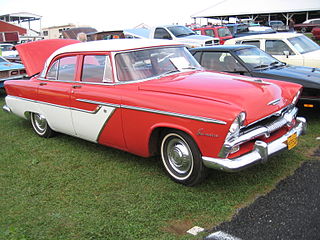
Virgil Max "Ex" Exner Sr. was an automobile designer for several American automobile companies, most notably Chrysler and Studebaker.

Imperial was the Chrysler Corporation's luxury automobile brand from 1955 until 1975 and again from 1981 through 1983.

Carrozzeria Ghia SpA is an Italian automobile design and coachbuilding firm, established by Giacinto Ghia and Gariglio as "Carrozzeria Ghia & Gariglio". The headquarters are located at Corso Guglielmo Marconi, 4, Turin. The company is currently owned by Ford Motor Company and focused on the European market through Ford's subsidiary in the region.

Three Chrysler Imperial Parade Phaetons were produced in 1952 by Chrysler as ceremonial vehicles. They were styled by Virgil Exner and were in many ways a preview of the new "100 Million Dollar" styling that would debut in 1955 on the newly separate Imperial marque and on other full-size Chrysler Corporation Cars.

The Plymouth Belvedere is a series of American automobile models made by Plymouth from 1954 until 1970.

The Dodge Matador is a full-sized automobile produced for the 1960 model year by Dodge. The Matador was the base model, positioned below the top trim level Dodge Polara that also used the 122-inch (3,099 mm) wheelbase platform of the Chrysler Windsor and Chrysler Newport models.

The Chrysler Hemi engine, known by the trademark Hemi or HEMI, refers a series of high-performance American overhead valve V8 engines built by Chrysler with hemispherical combustion chambers. Three generations have been produced: the FirePower series from 1951 to 1958; a famed 426 cu in (7.0 L) race and street engine from 1964-1971; and family of advanced Hemis (displacing between 5.7 L 6.4 L from 2003 to 2024.

The Chrysler Norseman was a four-seat fastback coupe built in 1956 as a concept car. Although designed by Chrysler's stylists, actual construction was contracted out to the Italian coach-building firm of Carrozzeria Ghia. The concept car was lost during the sinking of the SS Andrea Doria.
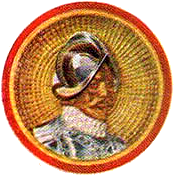
DeSoto was an American automobile marque that was manufactured and marketed by the DeSoto division of Chrysler Corporation from 1928 to the 1961 model year. More than two million passenger cars and trucks bore the DeSoto brand in North American markets during its existence.

The Dodge Custom 880 is an automobile that was marketed by Dodge from 1962 through the end of the 1965 model year. It was positioned as Dodge's product offer in the mid-price full-size market segment and to help fill the void in Chrysler's lineup left by the discontinuation of DeSoto in 1961.
Exner Revival Cars were created by noted automobile designer, Virgil Exner. He produced a series of "Revival Car" concepts for a December 1963 issue of Esquire magazine. His designs included an updated model for four famous American marques: Stutz, Duesenberg, Packard, and Mercer. He later designed updated Bugatti, Pierce-Arrow, and Jordan cars. Little came of these designs, though they became well known as plastic model kits produced by Renwal.
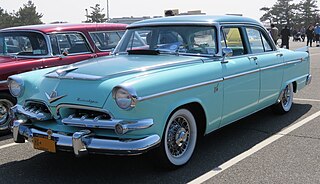
The 1955 Dodge car lineup, consisting of the entry-level Coronet, Royal, and ornate Custom Royal, was a major departure for the company. Driven almost out of business in 1953 and 1954, the Chrysler Corporation was revived with a $250 million loan from Prudential and new models designed by Virgil Exner. The Dodge lineup was positioned as the mainstream line in Chrysler's hierarchy, between DeSoto and Plymouth.
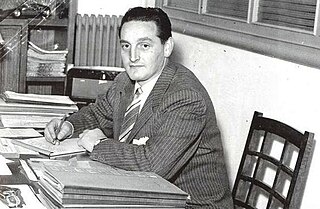
Luigi "Gigi" Segre was an Italian automotive designer noted for his business and engineering acumen during his stewardship and ownership of Carrozzeria Ghia (1953–63), one of an Italy's premier automobile design and coachbuilders.

A ute, originally an abbreviation for "utility" or "coupé utility", is a term used in Australia and New Zealand to describe vehicles with a tonneau behind the passenger compartment, that can be driven with a regular driver's licence.

The Plymouth Suburban is a station wagon produced from 1949 until 1978.

The Plymouth Belmont was a 1954 concept sports car built by Plymouth. It were the first plastic-bodied cars by the Chrysler Corporation. The Belmont seated two and used a V8 engine, that produced up to 150 hp (112 kW). It was originally painted in a light blue metallic, it was painted red later. It was 191.5" long. Had it ever become a production model, its main competitors would have been the Chevrolet Corvette and the Ford Thunderbird.
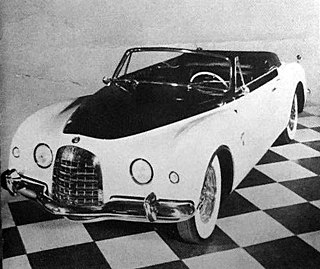
The Chrysler C-200 was a concept car released in 1952 by Chrysler.

The Plymouth XNR is a concept car developed by Chrysler. It was designed by Virgil Exner, and first shown in 1960. Also called the XNR 500, the car is an open roadster with some asymmetric features, and was proposed as a sporty addition to the Plymouth model lineup, and as competition for the Chevrolet Corvette.




















